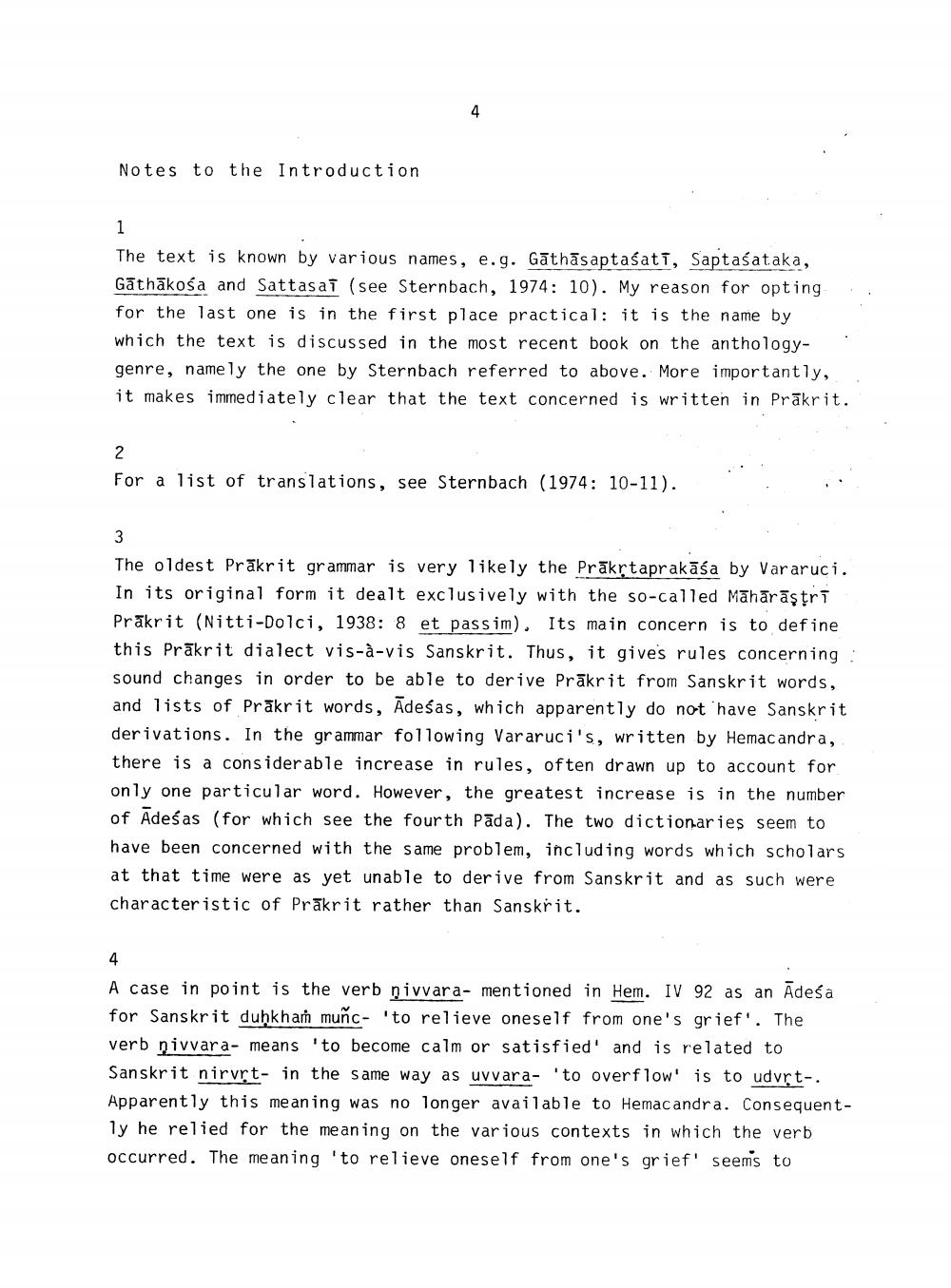________________
Notes to the Introduction
The text is known by various names, e.g. Gathāsaptaśati, Saptaśataka, Gathākośa and Sattasaí (see Sternbach, 1974: 10). My reason for opting for the last one is in the first place practical: it is the name by which the text is discussed in the most recent book on the anthologygenre, namely the one by Sternbach referred to above. More importantly, it makes immediately clear that the text concerned is written in Prākrit.
For a list of translations, see Sternbach (1974: 10-11).
The oldest Prākrit grammar is very likely the Prākrtaprakāśa by Vararuci. In its original form it dealt exclusively with the so-called Māhārāştri Prakrit (Nitti-Dolci, 1938: 8 et passim). Its main concern is to define this Prākrit dialect vis-à-vis Sanskrit. Thus, it gives rules concerning sound changes in order to be able to derive Prākrit from Sanskrit words, and lists of Prākrit words, Adeśas, which apparently do not have Sanskrit derivations. In the grammar following Vararuci's, written by Hemacandra, there is a considerable increase in rules, often drawn up to account for only one particular word. However, the greatest increase is in the number of Adeśas (for which see the fourth Pāda). The two dictionaries seem to have been concerned with the same problem, including words which scholars at that time were as yet unable to derive from Sanskrit and as such were characteristic of Prākrit rather than Sanskrit.
A case in point is the verb nivvara- mentioned in Hem. IV 92 as an Ādesa for Sanskrit duhkham muñc- 'to relieve oneself from one's grief'. The verb nivvara- means 'to become calm or satisfied' and is related to Sanskrit nirvrt- in the same way as uvvara- 'to overflow' is to udvrtApparently this meaning was no longer available to Hemac andra. ConsequentTy he relied for the meaning on the various contexts in which the verb occurred. The meaning 'to relieve oneself from one's grief' seems to




